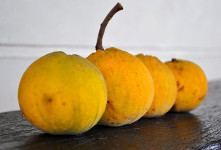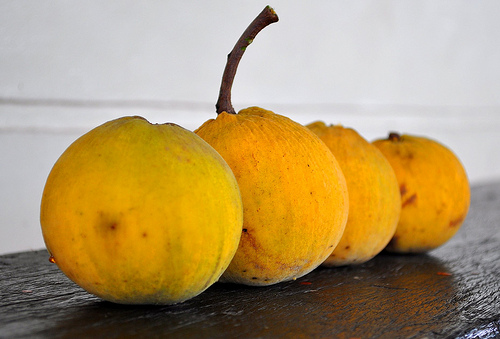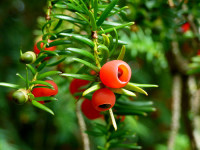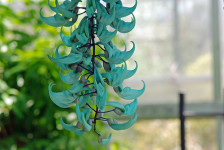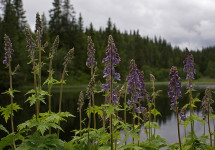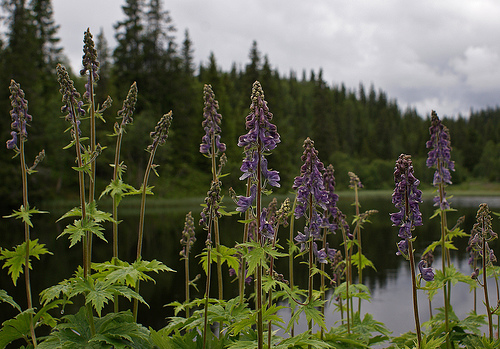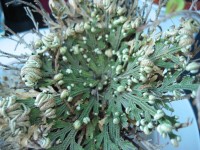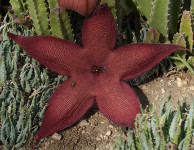
Starfish flowers really want to let you know when they are around.
- Starfish flowers are a species of succulent, rather than a cactus, and they are flowering perennial plants, native to South Africa.
- ‘Starfish flowers’ are also known as ‘giant toad plants’, ‘carrion plants’, ‘carrion flowers’, ‘giant zulus, and ‘starfish cacti’.
- The scientific name of the starfish flower is Stapelia grandiflora and it is from the family Apocynaceae, the family of dogbanes, and is in the subfamily Asclepiadoideae.
- Starfish flower plants produce large flowers with five petals, mostly in summer months, and the flowers resemble a starfish and grow to be 5 to 15 centimetres (2 to 6 inches) in diameter.
- The blooms of starfish flowers tend to be purple, red, or brown in colour, sometimes with a tinge of orange, and they are covered with hairs that are coloured white, purple and/or red.
A Starfish Flower
Image courtesy of Steve L Martin/Flickr
- Starfish flowers generally release a stench that is likened to that of a dead animal, intended to attract insects such as flies to pollinate the flowers.
- Warm climates are best for growing starfish flowers, and they prefer sunny to partly shady conditions.
- Starfish flower plants are often used for ornamental purposes, however they can also be used to attract irritating insects away from living areas.
- The green vegetation of starfish flower plants is multi-stemmed, and typically grows to 10 cm (4 inches) tall, while the plant can grow to a diameter of 50 cm (20 inches).
- The centre of starfish flowers can be a breeding site for insects, such as flies, where their eggs are sometimes deposited.




